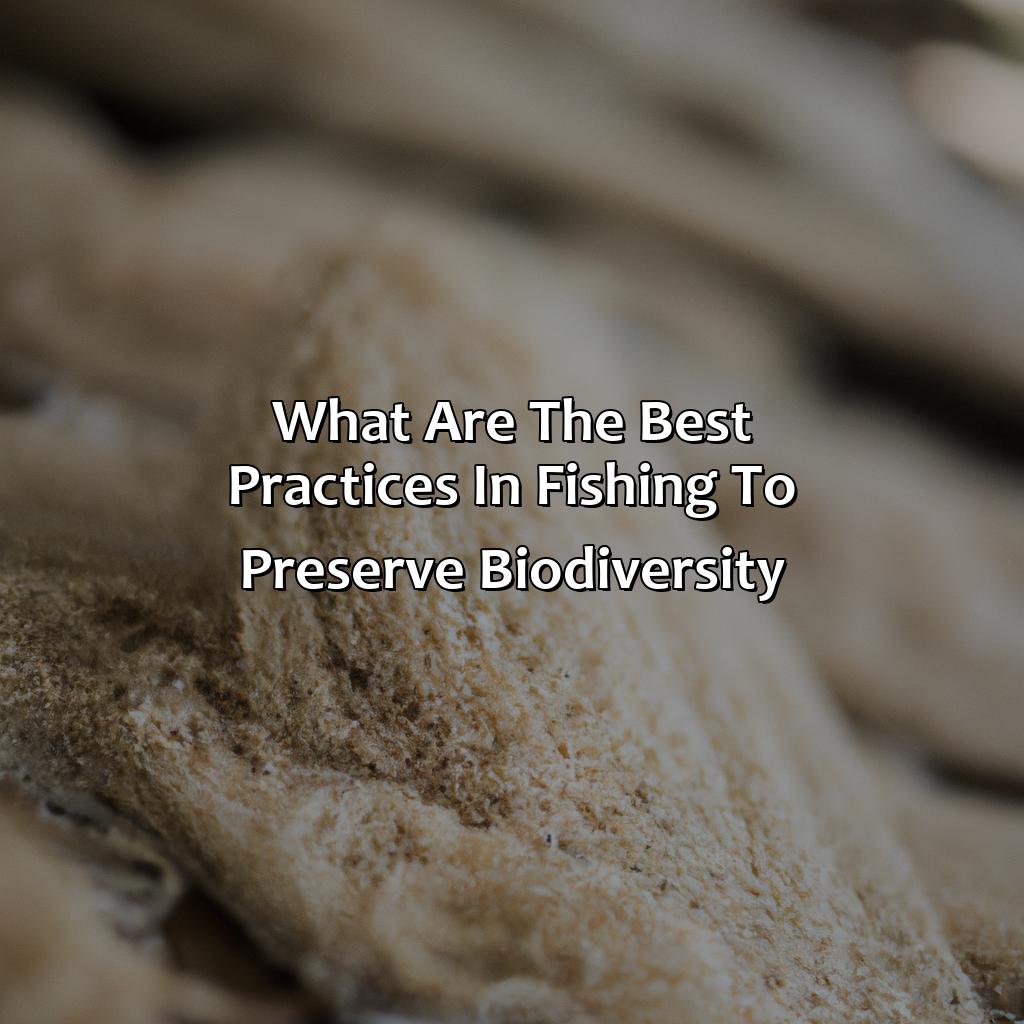Key Takeaway:
- Selective fishing gear is an effective method to preserve biodiversity by reducing bycatch and preventing harm to endangered species. It also minimizes the environmental impact of fishing gear.
- Diversifying fishing practices, such as promoting responsible fishing methods and managing fishery resources, can help preserve the ecosystem’s health. By balancing recreational and commercial fishing strategies, communities can promote sustainable fishing practices while conserving marine life and fish stock assessment.
- Implementing fishing regulations and policies can help prevent overfishing and encourage compliance with environmental sustainability standards. These policies include catch limits and size restrictions, fishing quotas and seasons, protected areas for biodiversity, and collaboration between fishing communities and conservation organizations.
Fishing Methods That Preserve Biodiversity
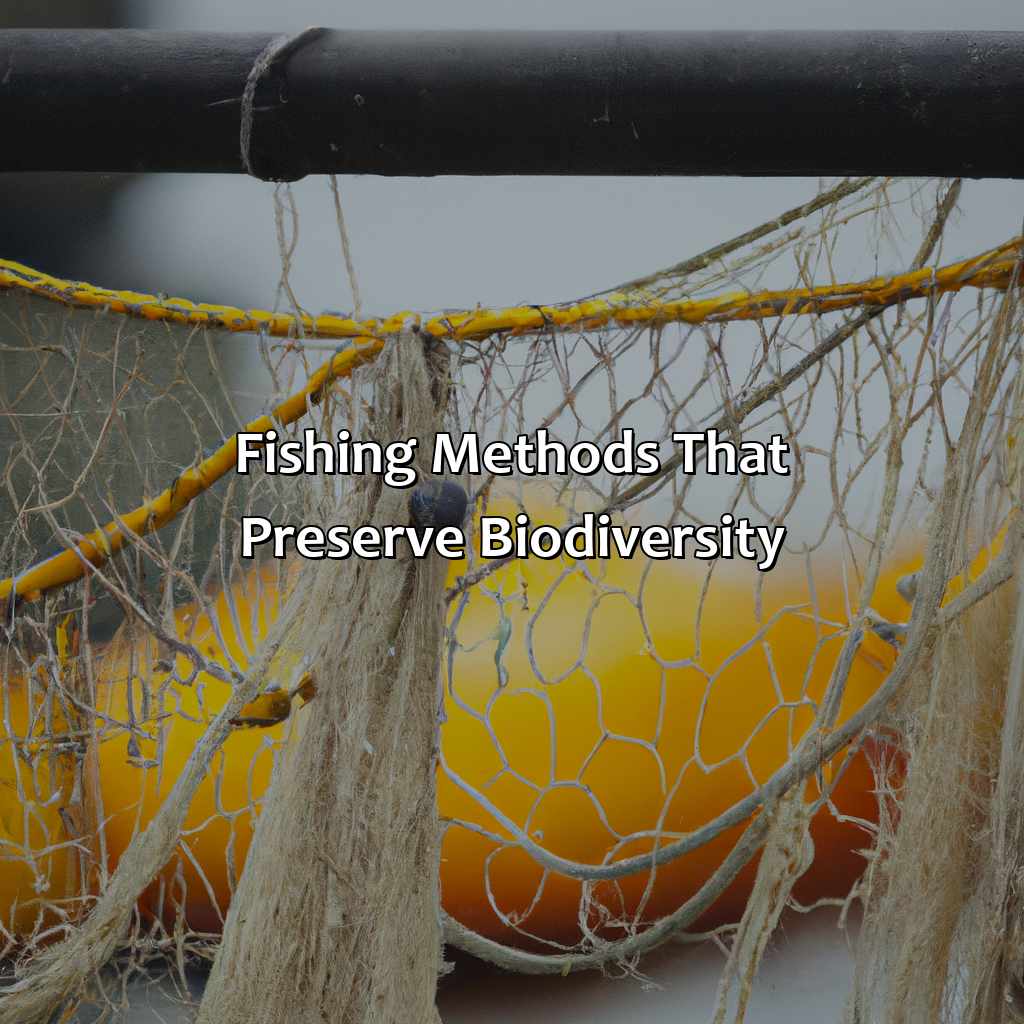
Photo Credits: anglinginsight.com by Ralph Young
Preserving biodiversity is crucial. To do this, we need sustainable fishing methods that protect habitats. In this section, we present responsible fishing techniques. These include:
- Selective Fishing Gear
- Diversifying Fishing Practices
- Habitat Management
These solutions tackle issues like bycatch, endangered species, fishery management, ecosystem health, and environmental impact.
Selective Fishing Gear
Selective fishing practices minimize bycatch and protect endangered species, using gear that targets specific species and avoids harming others.
The following table highlights some commonly used selective fishing gear:
| Selective Fishing Gear | Description |
|---|---|
| Fish Aggregating Devices (FADs) | Devices deployed in the water to attract fish of a certain species, making catching them easier while minimizing harm to other species. |
| Hooks and Lines | A traditional method where hooks are attached to lines, used for catching tuna, swordfish, and other targeted species. |
| Trap and Pot Gear | Nets or pots designed for the selective capture of particular types of fish or shellfish, avoiding harm to other species. |
| Bottom Trawling Equipment | Specialized nets that extract bottom-dwelling fish without disturbing the seabed, reducing non-target impact. |
Furthermore, using eco-friendly fishing equipment also reduces damage to marine ecosystems caused by fishing activities. In addition to the gear mentioned above, techniques such as hand-lining and spearfishing are also employed.
One suggestion is to encourage fishers to adopt selective gear by providing incentives or subsidies. Additionally, education programs can raise awareness about the benefits of such practices. By safeguarding endangered species and minimizing bycatch through selective fishing practices, biodiversity can be preserved for future generations. Responsible fishing means finding a balance between recreational and commercial fishing strategies to ensure fishery management and diverse fishing methods are used to preserve biodiversity.
Diversifying Fishing Practices
Responsible Fishing Strategies That Enhance Biodiversity
In fishing, it is vital to consider responsible fishery management. A key aspect of this responsibility is diversifying fishing practices to enhance biodiversity.
Here are six ways to diversify fishing practices:
- Using innovative equipment and technology that reduces unwanted catch and bycatch.
- Developing new strategies for sustainable commercial and recreational fishing.
- Employing gear and methods that reduce damage to the environment, habitat degradation, and overfishing.
- Incorporating community-supported fishing programs that encourage use of alternative methods such as aquaculture farming, community-supported agriculture, or other initiatives for local seafood production.
- Promoting and enforcing laws and regulations aimed at conserving biodiversity during fishing operations.
- Collaborating with non-governmental organizations (NGOs) or other industry partners on sustainable seafood certification programs that promote ecological integrity in seafood supply chains.
Diversification of fishing practices in commercial and recreational fishing sectors can promote more efficient resource-use while minimizing negative impacts on biodiversity. These strategies addressed enable effective conservation measures for aquatic life, habitats and ecosystems.
As a result – responsible fisheries management will have reduced its contribution to the wide-scale effects of climate change. Seafood sustainability issues will become less controversial because people would be able to enjoy a stable supply chain of healthy seafood.
Don’t risk missing out on this opportunity to face climate change head-on while ensuring higher profits by adhering closely to responsible fishery management practices.
Want to improve fishery sustainability and preserve marine life? Start with effective habitat management to promote ecosystem health and reduce environmental impact.
Habitat Management
Effective Ecosystem Stewardship for Marine Conservation
Preserving the health of marine ecosystems is necessary for maintaining resilient fishery sustainability. Habitat management is a critical aspect of ecosystem stewardship, indicating the need to preserve species’ habitats through precautionary measures.
To ensure sustainable fishing practices in marine conservation, habitat management includes:
- setting aside protected areas
- implementing zoning policies and restrictions on fishing gear
- monitoring how the fishing practices have affected their environment
Farms are also being developed using innovative fishery technology to reduce environmental impact.
The implementation of habitat management policies depends largely on successful fish stock assessment, scientific research, and analysis. This leads to developing strategies that aid in safeguarding marine life by reducing the exploitation rate of natural resources.
As an example, shrimp trawling in Caribbean sea grass beds threatened countless valuable fisheries with nets being dragged across it until it was outlawed due to their importance in marine ecosystem health.
Remaining steadfastly aware and employing adaptive measures can help combat threats posed by nature’s vagaries, like climate change. Achieving this integral balance between fisheries production and environmental conservation ensures healthy oceans which translates into continued economic growth in our communities.
Dive into the regulations and policies that support environmental sustainability in fishing practices, from catch limits to protected areas, and make sure your next catch is responsible and certified.
Fishing Regulations and Policies for Biodiversity Conservation
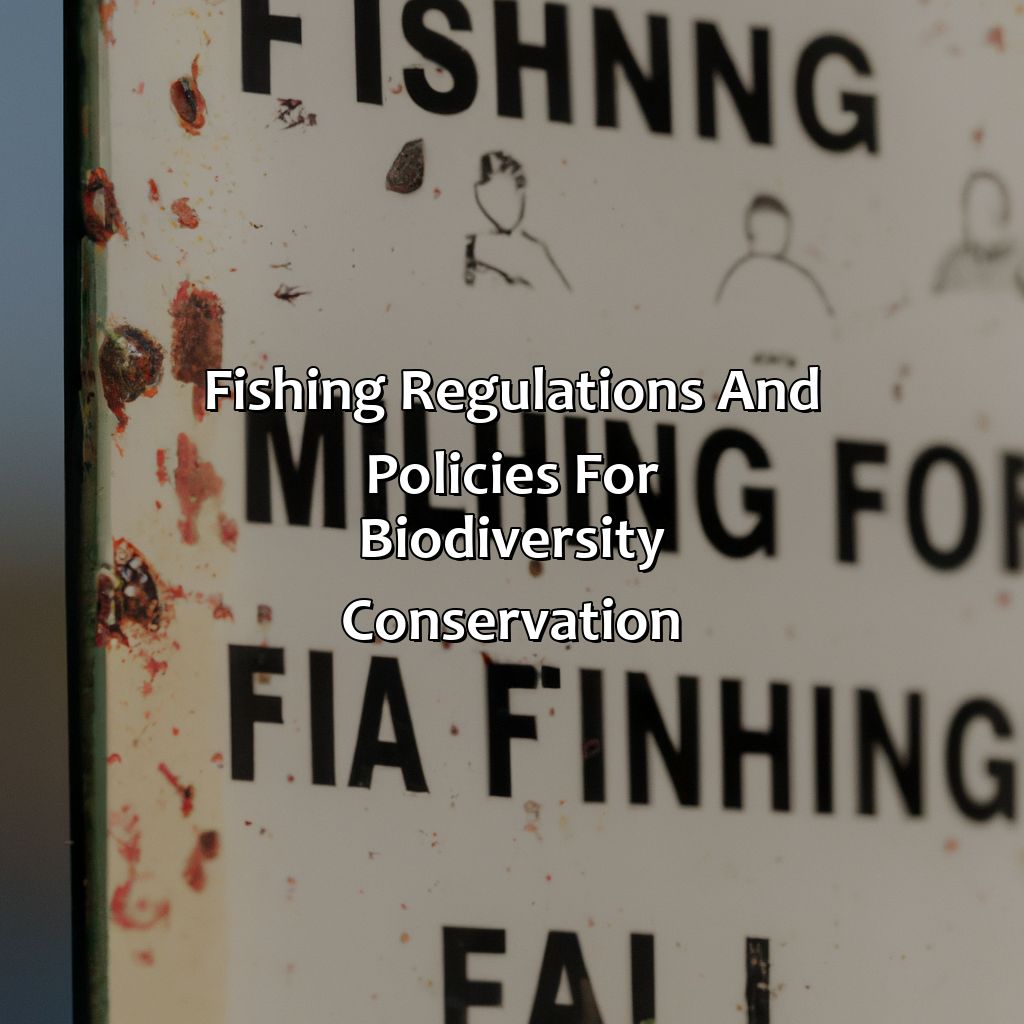
Photo Credits: anglinginsight.com by Kenneth Torres
Fishing regulations and policies are important to safeguard biodiversity. Catch limits, size restrictions, quotas and seasons are solutions for fishery governance and conservation. Following fishery certification standards is key to ensure fishing is not detrimental to environmental sustainability. Collaborative efforts, fishery agreements and impact assessments are vital for responsible fishing practices amidst fishery climate change.
Catch Limits and Size Restrictions
Catch Quotas and Size Restrictions are highly essential for the preservation of marine biodiversity. By controlling the amount and size of fish caught, we ensure the growth and survival of endangered species in our ecosystem.
Below is a table explaining the types and codes for Catch Limits and Size Restrictions:
| Type | Code |
| Catch Quotas | CQ1, CQ2, CQ3 |
| Size Restrictions | SR1, SR2, SR3 |
Fishery sustainability guidelines dictate that these regulations must be enforced strictly to ensure that endangered species in our waters don’t become extinct.
Every year, sea creatures suffer due to overfishing. Therefore, to manage the fishing industry better, we need to enforce strict guidelines on catch limits of different species across various regions globally.
We urge everyone to follow these guidelines to foster sustainable fish populations while also preserving biodiversity in marine ecosystems. If we do not do so, we may damage aquatic life beyond repair.
Fishermen are like bears, they love to fish during their quota season and hibernate with their fishery production during off-season.
Fishing Quotas and Seasons
Fishing Quotas and Periods refer to the restrictions set by governing bodies to maintain the fishery statistics and production. These policies ensure that fishing remains sustainably profitable while protecting the oceanic life cycle.
A table may help illustrate these policies better –
| Policy | Explanation |
|---|---|
| Quota Limits | The maximum amount of fish allowed to be caught in a specific time frame. |
| Size Regulations | A minimum size limit for mature fish is set, aiming to let smaller, younger marine animals spawn so that they can repopulate. |
| Seasonal Restrictions | Certain seasons are banned from fishing to let fish spawn uninhibitedly. |
The quotas and seasons have an impact on local economies, but their implementation helps reduce the depletion of oceanic wildlife whilst maintaining economic sustainability.
Pro Tip: Efficient management of fisheries requires close monitoring of aquatic biodiversity and a stringent regulatory framework.
Protected areas for biodiversity are not just a marine conservation strategy, but also a means to balance the impact of fishing on coastal communities and tourism, while preserving the delicate ecosystem.
Protected Areas for Biodiversity
The establishment of marine conservation strategy has led to the creation of special zones for the protection of biodiversity. These areas are designated as either marine protected areas (MPAs) or no-take zones, where fishing activity is either prohibited or significantly restricted. Not only do these areas preserve crucial ecosystems and species, but they also support coastal communities by promoting ecotourism.
However, fishing practices in protected areas remain a challenge due to poor enforcement and stakeholder conflicts. Despite this, it is important to continue implementing and expanding such strategies to maintain biodiversity and minimize damage caused by fishing activities.
Keeping track of fishery data is vital for sustainable fishing practices and to prevent our oceans from becoming one big fish-out-of-water story.
Fisheries Monitoring and Data Collection
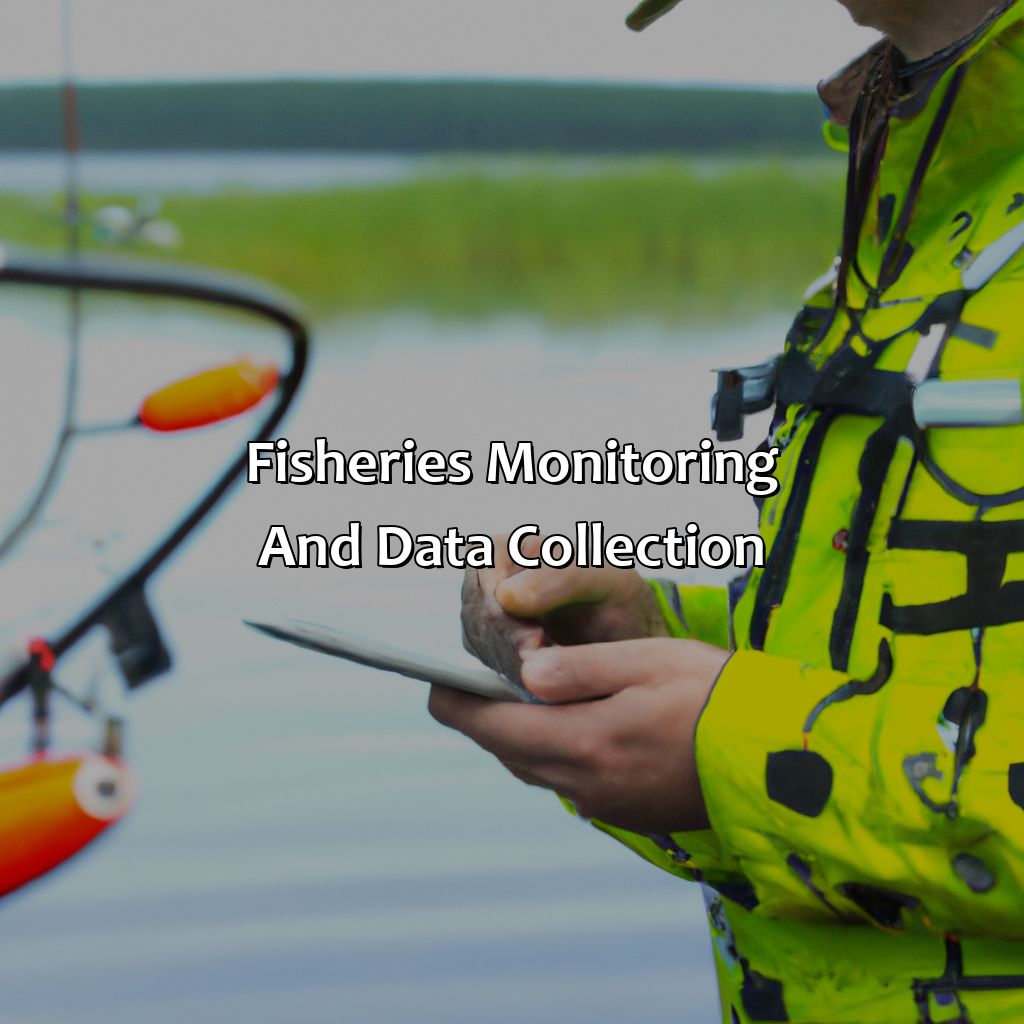
Photo Credits: anglinginsight.com by Elijah Adams
Gaining an understanding of fishery stats, economics and assessment is key for properly managing fisheries with minimal impact on marine biodiversity. Catch reporting and surveillance are essential to gain insights into fish populations. Scientific research and analysis are also necessary to understand marine ecosystems. These are the two main sections of fisheries monitoring and data collection we will discuss: catch reporting and surveillance plus scientific research and analysis.
Catch Reporting and Surveillance
Fishery Surveillance and Data Collection
Accurate tracking of fish population and fishing information is crucial for sustainable fishing practices. Hence, the fishery research community has emphasized the need for effective monitoring systems to ensure that fishery management policy remains relevant and data-driven. To achieve this, advanced surveillance systems are established to collect catch data, which includes the amount of fish caught and its species composition. This collected information is accessed, analyzed, and utilized by resource managers to develop sound policies. The importance of integrating such measures into the fishing trade is imperative since unchecked overfishing could cause severe ecological issues.
Moreover, one way surveillance practices can enhance data collection is by harnessing technological advancements that aid real-time tracking of marine life. By incorporating non-invasive techniques in observational research methods such as tagging or via drones, this allows researchers to gain knowledge passively on how fish populations behave, move across various ecosystems depending on migration or breeding patterns, making it possible for creating corrective policies for sustainability purposes.
Furthermore, accurate monitoring helps promote transparency in trade policies among fishing communities. In regions with abundant fisheries resources where people largely rely on them as a source of livelihoods, cross-industry collaboration between authorities and holders should be proactively encouraged for efficient data sharing regarding the different ecosystems they transact in.
Unlock the mysteries of the deep with fishery science and technology, and uncover the keys to preserving marine biodiversity.
Scientific Research and Analysis
Scientific Analysis and Research play a significant role in the preservation of marine biodiversity. Fishery science and technology are continually developing with improved analytical tools and technology leading to better data acquisition, making it easier to collect and monitor fishery data. Marine biology research investigates the diversity of target species, while other disciplines study the interaction of different species within aquatic ecosystems to develop a better understanding of population ecology.
To understand how fishing practices affect biodiversity, statistical analyses of fish populations collected by commercial or recreational fisheries can help make informed decisions for conservation measures. Mathematical models can help predict population trends under various exploitation scenarios that may help identify sustainable harvesting rates for different species. Monitoring programs ensure enforce regulations by tracking catches, assessing compliance with size limits and catch quotas.
One unique strategy involves using molecular techniques for species identification which increases accuracy in monitoring fishing activities. DNA-based sampling provides accurate information about landed fish caught using selective gear, unreported catches, and endangered non-target species that may get entangled in fishing gear.
Apart from scientific research, stakeholders involved both in the industry and conservation organizations must collaborate to manage fish populations effectively. Protected areas, quota systems based on stock assessments is gradually emerging as promising working strategies.
Working together towards sustainable fishing practices not only benefits the fishing community and their livelihoods, but also contributes to better marine resource management, conservation, and planning for the future.
Collaborative Efforts in Fishing Community
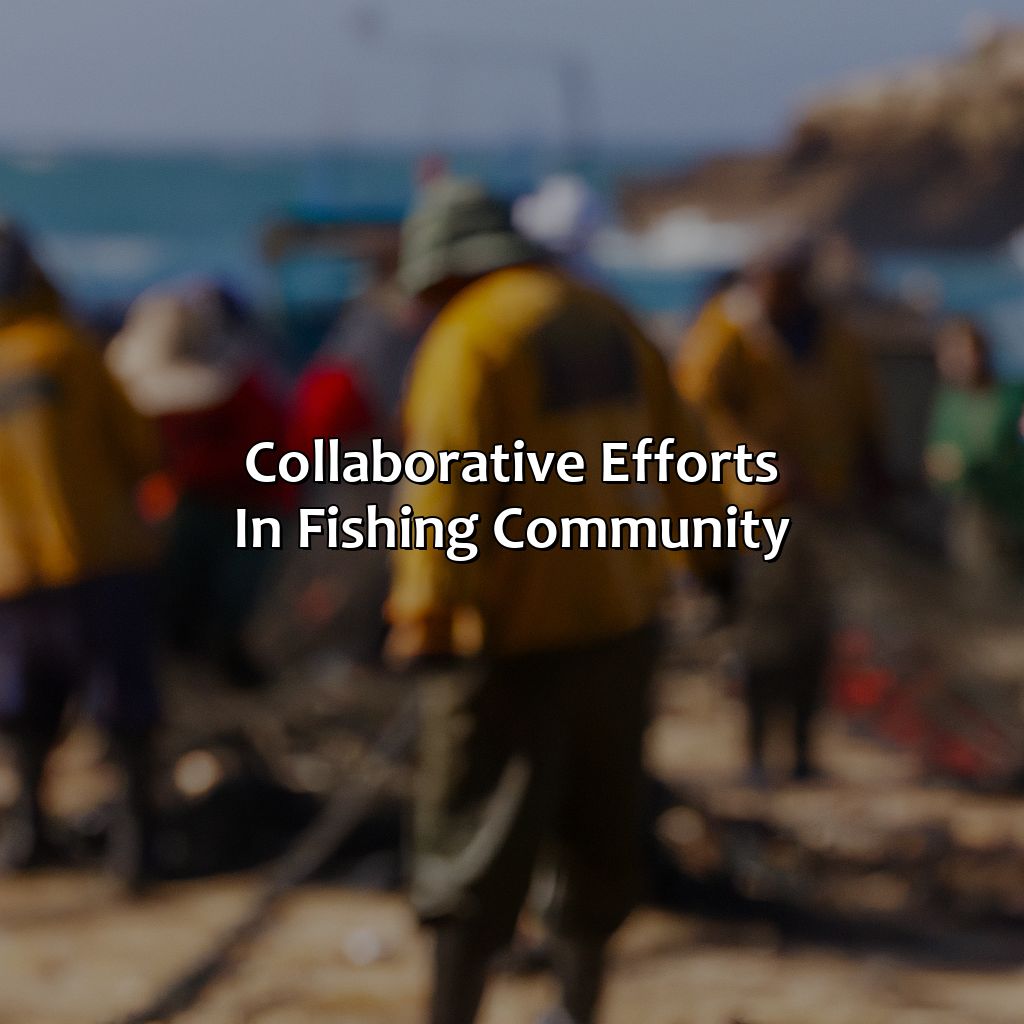
Photo Credits: anglinginsight.com by Philip Campbell
Sustainable fishing and protecting marine biodiversity must come from collaborative efforts of the fishing community. We can preserve marine resources, while helping fishing livelihoods and upholding marine stewardship, by improving fishing industry practices, fisheries management, and infrastructure.
To do this, there are two approaches:
- Fishers’ Participation in Resource Management, which covers fishery governance and restricted species rules
- Conservation Organizations and Fishing Industry Partnerships which focuses on conservation, fishing industry, and innovative fishing technologies
Fishers’ Participation in Resource Management
Fishers play an essential role in fishery governance and management, contributing to the protection of ecosystems while ensuring their livelihoods. Their involvement is crucial in identifying prohibited species and safeguarding them. They are also important for monitoring fishing activities and reporting any irregularity or overfishing to the authorities. By leveraging their practical knowledge, they can provide valuable input into fishing industry regulation and develop sustainable measures that promote conservation.
Collaboration between fishers and conservation organizations is particularly relevant in ensuring best practices in fishing. The former benefits from expert guidance, access to resources, and assistance with compliance issues, whereas the latter benefits from greater engagement with local communities and a better understanding of their needs. Together, they can ensure that fishing practices abide by ethical principles that reflect democratic values while preserving biodiversity.
One unique aspect of fisher involvement is how it can vary geographically based on the ecosystem. In some regions, local traditions are an integral part of fishing practices, making them difficult to change without a complete understanding of their impact on biodiversity conservation. Conversely, innovative pilot projects aimed at analyzing socio-environmental interactions have shown promising results on several continents.
A recent study conducted by the Sustainable Fisheries Partnership confimed that “7 out of 10 seafood businesses see sustainability as a high priority” (SeafoodSource). This highlights the rapidly growing emphasis on promoting sustainable fishing practices throughout all sectors of the industry – from fisheries management and harvesting to processing and distribution.
Conservation organizations and fishing industry partnerships are paving the way for innovative technologies that promote environmentally sustainable fishing practices.
Conservation Organizations and Fishing Industry Partnerships
Collaborative Efforts in Biodiversity Preservation between Fishing Industry and Conservation Organizations can ensure sustainable use of marine resources. Fishers should partner with conservation groups to promote responsible fishing practices that minimize impacts on endangered species and habitats. The introduction of Fishing Innovation Technologies, such as satellite tracking and acoustic tags, can help monitor fish populations and reduce bycatch. Moreover, partnerships between fishing industry leaders and conservation organizations can generate better policies for the sustainable use of fisheries resources.
According to a report published by WWF, the conservation organization partnered with various fishing industry stakeholders globally to create a more responsible fisheries industry.
Fishing practices and technology must adapt to preserve marine ecosystems, combat overfishing, and tackle challenges such as plastic pollution and climate change.
Challenges and Future Directions for Biodiversity Conservation in Fishing Practices
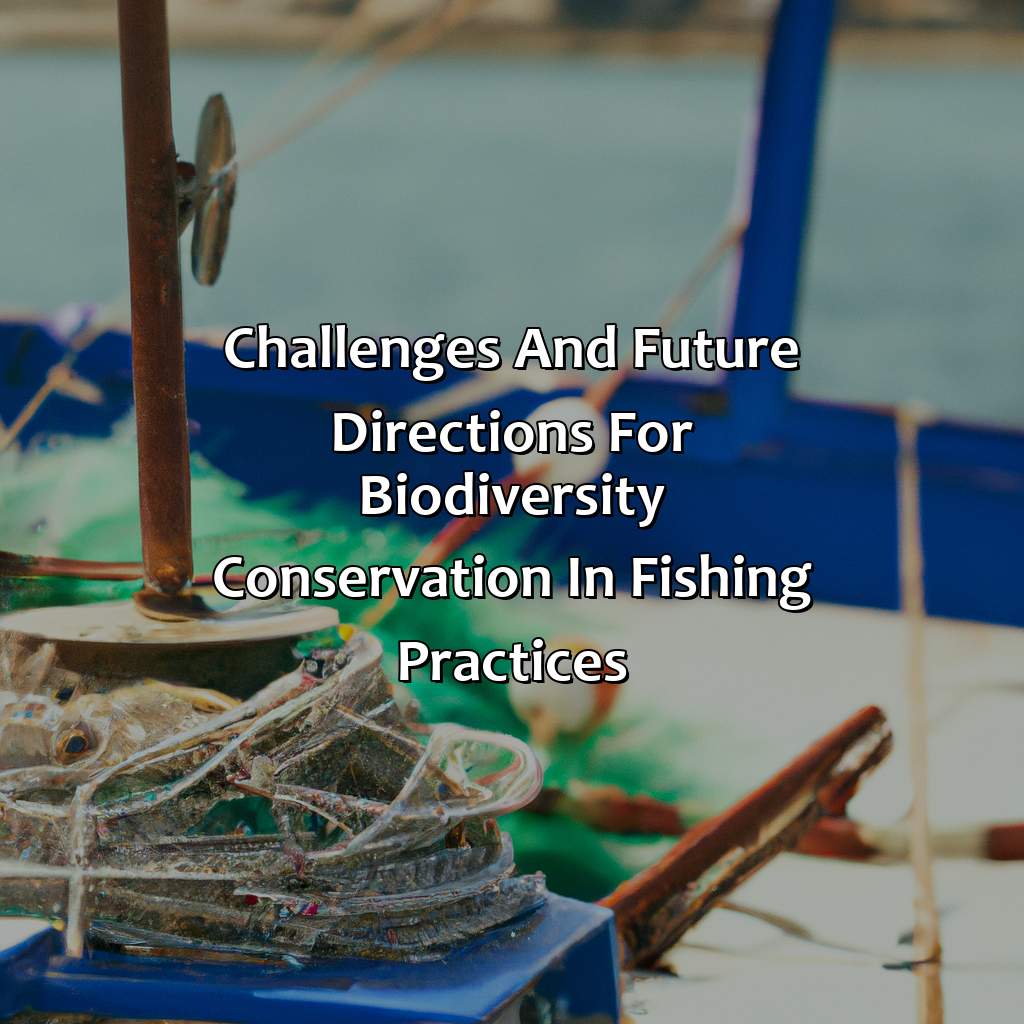
Photo Credits: anglinginsight.com by Eric Rodriguez
Tackle the challenges of conserving biodiversity when fishing by knowing how overfishing, fishery tech, marine ecosystems, and fishing industry regs interact. Plus, address plastic pollution and fishing climate change.
To get insight, check out Climate Change and Its Impacts on Fisheries, and Technological Advances and Innovations in Fishing Practices.
Climate Change and Its Impacts on Fisheries
Many fishery trends and species distribution are being affected due to changing climate conditions, which can lead to changes in the availability of fish stocks. Fishing impact is felt by people who rely on fishing for their livelihoods, including the fishing and poverty situation in many countries. Climate-related effects such as oceanographic changes and extreme weather events add to the fishery impact on tourism, food security, and income generation related to the global fishery trade.
Fishing communities worldwide need to adapt to manage these impacts, including reducing greenhouse gas emissions, promoting sustainable practices through fishing gear technology, and habitat protection measures like creating marine protected areas. These initiatives could help maintain fisheries without exhausting marine resources.
It will take community-wide efforts that consider both environmental conservation concerns with socio-economic goals of humanity like varied aquaculture challenges; this will increase awareness among stakeholders and drive reforms into managing resources better.
For instance, an article from International Institute for Fisheries Economics & Trade found that climate change reduced catches in marine fisheries by 4 percent globally between 1930-2010. Net primary productivity will be modified by temperature increases related to global warming. The locations of cold-water habitats may relocate because increasing surface sea temperature.
Fishing industry practices are evolving with technological innovations, but we must ensure they don’t harm the biodiversity we seek to conserve.
Technological Advances and Innovations in Fishing Practices
With the advancement of technology, the fishing industry has witnessed significant progress in terms of fishing practices. Innovations in the fishing industry practices have minimized their harm to biodiversity. These technological advances promote sustainability and increase cost-effectiveness in terms of catch and time.
For instance, sonar and acoustic technologies can detect schools of fish more precisely than before. Additionally, satellite-based tracking helps vessels avoid unintended bycatch and reduce harm to other species. The use of electronic monitoring systems also ensures that vessels follow regulations on catch limits and size restrictions.
Such innovations in fishing industry practices are making it easier to track data, maintain standards, and manage resources sustainably. These advancements are not just limited to mechanical or digital upgrades on boats; they also involve improving fish handling techniques, such as improved storage conditions, new packaging methods for seafood products.
In contrast to traditional fishing methods that depended on brute force technique or sheer luck, innovation has revolutionized commercial fisheries’ approach globally. These developments create more sustainable business models while reducing environmental damage.
A recent study found that fishermen are starting to realize the benefits of adopting new approaches to equipment or tool usage to preserve marine environments’ health. A case-in-point is the use of modified trawling gear that reduces seabed impacts but allows effective capture of target species like squid and codfish for marketable returns.
Overall, technological advances and innovations in fishing practices will significantly help minimize damage to marine systems through efficient resource utilization without causing drastic biodiversity loss or destroying a particular ecosystem’s intricate fabric.
Five Facts About Best Practices in Fishing to Preserve Biodiversity:
- ✅ Overfishing is a major threat to aquatic biodiversity and can lead to the depletion of fish populations. (Source: National Geographic)
- ✅ Sustainable fishing practices, such as catch and release, can help to preserve fish populations and maintain ecological balance. (Source: WWF)
- ✅ Using selective fishing gear and avoiding fishing in sensitive areas can minimize bycatch and protect non-target species. (Source: NOAA Fisheries)
- ✅ Fishing regulations and monitoring can help to prevent illegal, unregulated, and unreported fishing, which contributes to overfishing and depletion of fish populations. (Source: FAO)
- ✅ Engaging in sustainable seafood practices, such as choosing seafood from well-managed sources, can support fisheries that prioritize sustainability and help to reduce the impact of fishing on biodiversity. (Source: Monterey Bay Aquarium)
FAQs about What Are The Best Practices In Fishing To Preserve Biodiversity?
What are the best practices in fishing to preserve biodiversity?
There are many best practices in fishing to preserve biodiversity. Here are some of them:
- Limit fishing to sustainable levels
- Avoid overfishing vulnerable species
- Use selective fishing gear
- Respect minimum size limits
- Release unwanted species alive and unharmed
- Avoid fishing in ecologically sensitive areas

